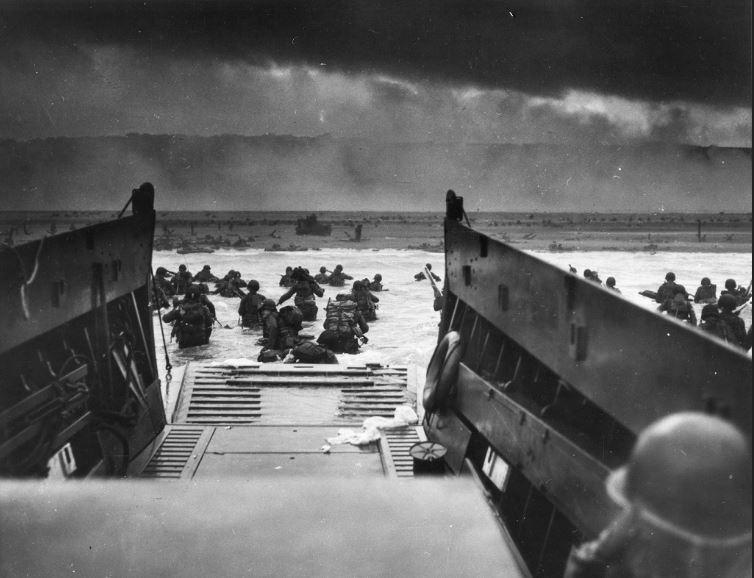D-Day, 80 years on into the jaws of Death

US Naval History and Heritage Command #26-G-2343
Depicting the landing of troops of E Company, 16th Infantry Regiment of the United States 1st Infantry Division (The Big Red One) at Omaha Beach in the early hours of 6 June 1944, this photograph is one of the most famous images of the Second World War. While capturing an iconic moment of the twentieth century, this photograph is also perhaps one of the most frequently incorrectly attributed. Often it is credited as part of the series of eleven shots taken by the famous Life magazine photographer, Robert Capa. The photograph was in fact taken by Robert F. Sargent, Chief Photographer’s Mate, United States Coast Guard. Landing craft operated by the Coast Guard continuously ferried soldiers from ships to the Normandy shore: the photograph was titled Taxis to hell – and back – into the jaws of death. The combat photographs taken at Omaha beach by Sargent and Capa have become symbolic of something bigger than just a single moment in time. They have come to represent, in the words of Churchill, “much the greatest thing we have ever attempted”.